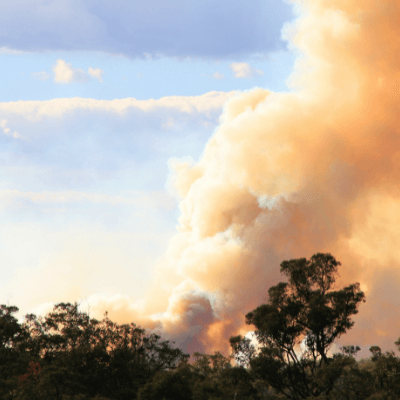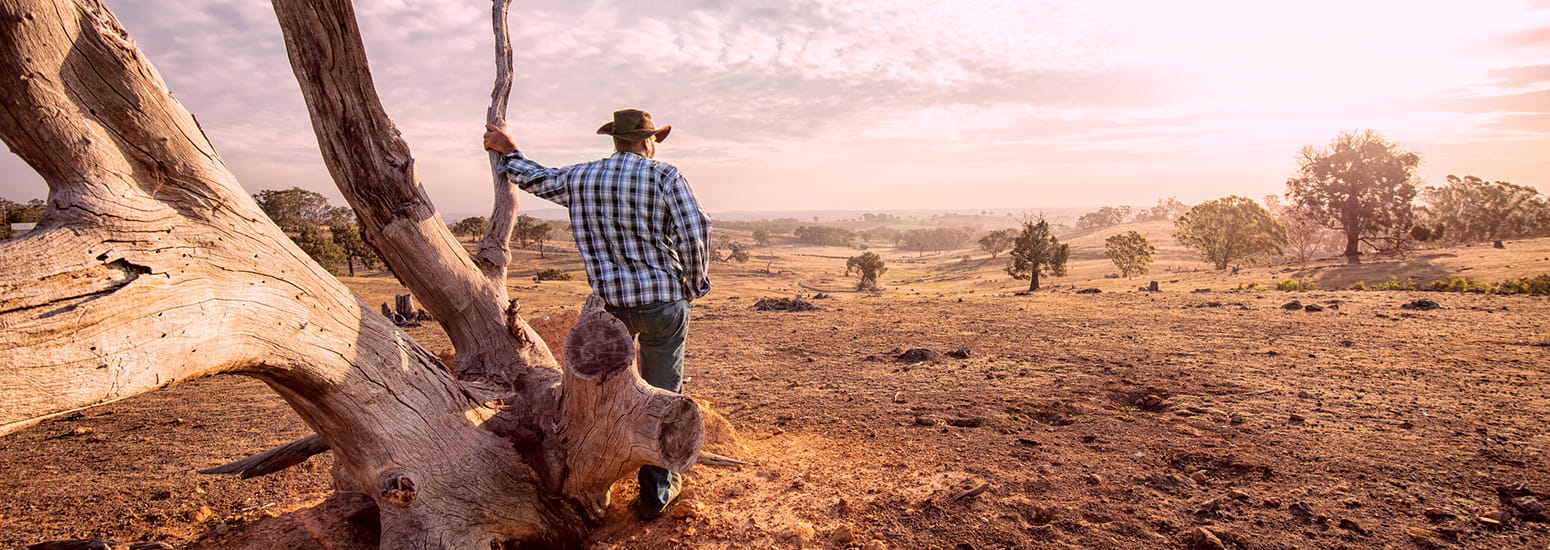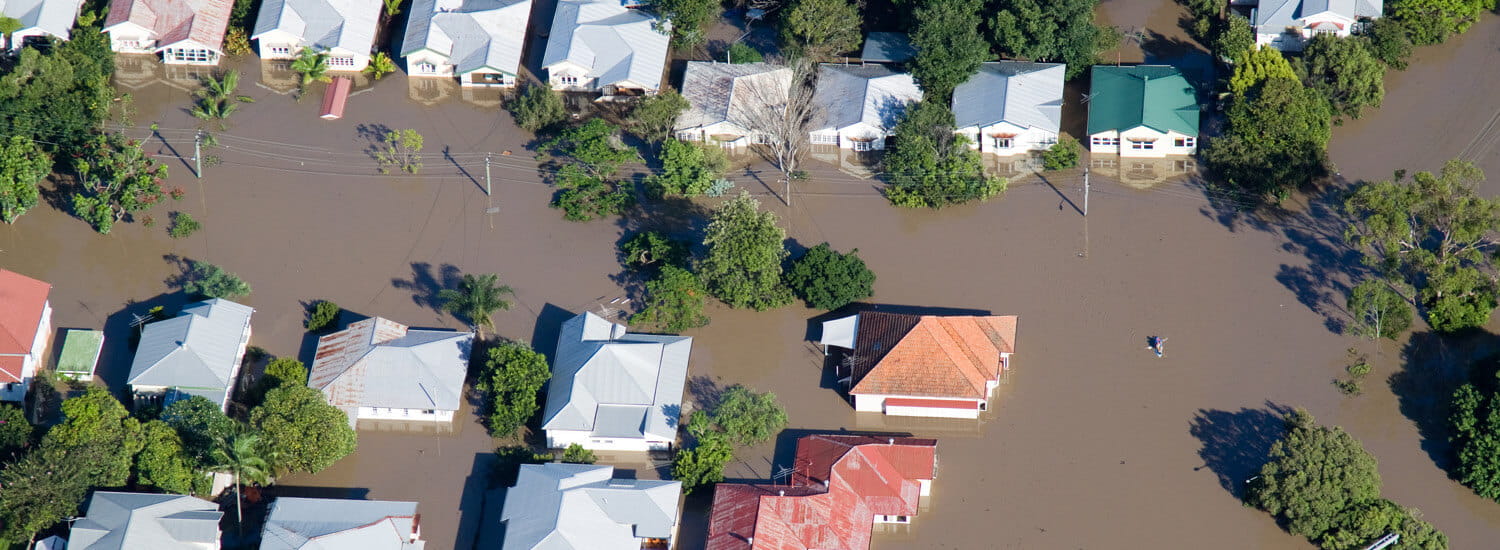Weather in Australia: what will Spring be like?
- Winter rain will continue into spring – bringing with it an increased flood risk
- Temperatures set to be above median minimum across most of the country
- Strong crop and grass growth plus rising temperatures creates possibility of fire
It’s important to know what the weather has in store for us over the coming months. As well as helping us plan what we’re going to be doing, it also alerts us to risks we may possibly face. So, what does the Australian weather have in store for us for spring?

Grab your umbrellas – there’s going to be more rain
After our wettest winter in five years (incidentally it was still four per cent below the 1961-90 average)1, rain’s going to continue through spring. Winter rain came early in the season – August rainfall was actually 31 per cent below average – but according to the Bureau of Meteorology (BOM) the south-east of Western Australia (WA), western parts of the Northern Territories (NT), western South Australia (SA), far southern Victoria and eastern Tasmania, all have a greater than 60 per cent chance of exceeding the median rainfall. The eastern two-thirds of Australia, meanwhile, are set to see even more rainfall, with their chances of exceeding the median rainfall greater than 70 per cent2.
Negative Indian Ocean Dipole to continue into spring
The reason we’ve seen increased rainfall during winter, and leading into spring, is the negative Indian Ocean Dipole, which creates warmer ocean temperatures to the west of Australia – this in turn produces additional cloud cover and moisture across the continent3. The BOM believes the negative Indian Ocean Dipole 2021 will last well into spring4.
The El Niño–Southern Oscillation (ENSO) outlook, meanwhile, is neutral at present, meaning neither an El Niño (which drives drought) or La Niña (which drives higher volumes of rain) event is expected. Although two out of seven models the BOM uses believe sea surface temperatures could remain cool enough to be considered a La Niña5.
Of course, with a wet spring following a wet winter, there can be an increased risk of flooding. If you’re in an area that’s prone to flooding, make sure you’re prepared.
Temperatures set to rise – despite the wet weather, fires are likely
While we’re likely to see higher than median rainfall, above median minimum temperatures are likely for the vast majority of Australia – with the exception of southern WA. Above median maximum temperatures, meanwhile, are forecast for the northern tropics and the far south-east6.
A consequence of the above average wet weather so far this year, of course, is the strong growth of crops and grass. Combined with rising temperatures, this creates a fertile environment for fires, particularly grass fires. The Seasonal Bushfire Outlook, Spring 2021, from the Australian National Council for fire and emergency services, says there is an above normal fire potential for conditions over south-east Queensland and northern New South Wales (NSW) due to grass and crop growth, while this is an above normal fire potential in northern WA as a result of grass growth and dry soil7.

Prepare for the season
Taking the right action before an incident occurs can make all the difference.
If you’re in an area that’s prone to flooding, make sure you’re prepared for the season ahead. Having sandbags at the ready, making sure your downpipes and gutters are free from obstructions (so rainwater can travel through them) and making sure the roof is in order are just a few ways you can get ready for rain and reduce the risk of damage.
Now is also an opportune time to prepare your home or your business for bushfire season. Checking gutters and roof for natural debris, which can be extremely flammable, cutting back any overhanging trees and keeping your grass short are just a few of the proactive things you can do to reduce the chances of a fire reaching and taking hold in your property. Understanding your level of bushfire risk and having a bushfire readiness plan that contains information about what you’ll do and when should a bushfire strike is also critically important.
Consider your insurance cover
It’s also important to check on at least an annual basis that your property and possessions are adequately covered.
Remember, the costs to repair or rebuild your property should it be affected by fire or flood could be significantly different to what they were five years ago, so it’s important to check you’ve got the right levels of cover. Up to 80 per cent of Australians are estimated to be underinsured8, so it’s smart to check.
1 http://www.bom.gov.au/climate/current/season/aus/summary.shtml
2 http://www.bom.gov.au/climate/outlooks/#/rainfall/summary
3 https://www.abc.net.au/news/2021-08-27/spring-weather-outlook/100410894
4 http://www.bom.gov.au/climate/outlooks/#/overview/summary
5 http://www.bom.gov.au/climate/enso/
6 http://www.bom.gov.au/climate/outlooks/#/overview/summary
7 https://www.afac.com.au/docs/default-source/bushfire-seasonal-outlook/seasonaloutlook_spring_2021_v1-0.pdf
8 Defence Service Homes Insurance: Is your home at risk of underinsurance?









